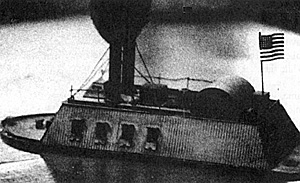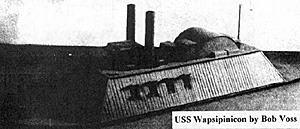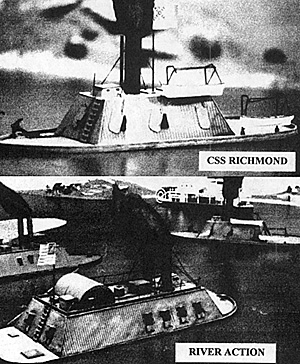The other day I received a letter from Hal asking me as a "long time supporter/contributor of MWAN" to consider writing something for the 100th issue. Now, long time supporter is probably just code for "old timer" but Hal was just trying to be nice. I am not sure exactly how long I have been getting MWAN, but I can remember getting sample issues from Hal that were done off a mimeograph machine and stapled at the top like a book report. In those days the availability of issues very much depended on whether or not that mimeograph machine was working or not. The only wargame magazines that I now bother saving are MWAN, The Courier and the old Wargamer Digest.
Looking at my collection of MWAN, I have 78 of the 98 issues. I believe I started collecting them when they went to booklet form. While the size and shape have surely changed over the years, the content has always remained the same, with various wargamers writing about their niovment of the hobbv of wargaming. Congratulations have to go out to Hal for putting out the best and most consistent wargaming magazine for 100 issues.
On previous occasions while writing for MWAN, Hal had inquired about me doing a regular column. At that time with a very heavy gaming schedule it did not seem practical to try and do a column. Now that things have slowed down, I will try and do something for each issue. The subject matter will revolve around the type of articles I like to see in wargaming mags. Those being: how to do articles on building equipment and terrain, game scenarios, rule ideas looking at the actual military history, the evolution of rules and general commentary on the state of the hobby. An article that I have wanted to do for a long time was a method of building 25mm ACW gunboats and ironclads. A method that would provide for a sharp looking model with the least amount of work and expense.
DUMPSTER GUN BOATS
 I like to call my gunboats "dumpster gun boats" as many of the materials to make them can
be found in the typical dumpster found at a construction site for a new home. This is a project
that will require some model building skills. So if you are the type that each time you use an X-acto knife, a box of Band-Aids also gets used, then this might not be the project for you!
I like to call my gunboats "dumpster gun boats" as many of the materials to make them can
be found in the typical dumpster found at a construction site for a new home. This is a project
that will require some model building skills. So if you are the type that each time you use an X-acto knife, a box of Band-Aids also gets used, then this might not be the project for you!
After the bottom is completed the main casement must be built. To simplify this procedure I first cut out the shape of the casement from a scrap piece of 2"x 6", using a table saw. The angle for the cut was about 25 to 30 degrees. The actual slope was around 45 degree's but the lesser slope of the model looks OK and helps "shrink' the size of the model. The next step is to fasten the casement block to the bottom. This can be done with a couple of screws but make sure you counter sink the screws in the bottom so the boat sits flat. Now the casement sides and top need to be covered with etched plastic. This can be bought at a hobby shop and comes in sheets. It looks very much like the iron railing that was used to armor Civil War gunboats. Lay the plastic along the casement block. Mark and cut out plastic to fit. Cut out gun port holes on each side as needed. Then glue the plastic onto the block using 5 minute epoxy glue. The pilot house was done using the same technique.
The smoke stacks can be made from scrap copper or PVC piping. Before installing drill small holes for support wires and bracing. To install, drill holes through top into wood casement block. Then glue in with epoxy. If you do not get a tight fit this can be covered up by finding a washer that slides over the piping.

For guns, I used some old Napoleonic cannon barrels that I had laying around. You can cut the barrels in half, drill appropriate holes in the gun ports, and then glue in. Gun port covers are made from plastic squares. Drill a hole in the center, which is a little larger than the gun barrels. Cut the square in half and then glue each half to the top and bottom of the gun port.
The Paddle wheel cover at the back of the boat was made from a scrape piece of PVC piping. It's the same stuff that plumbers use for water drain lines under sinks. Cut the piping in half. The ends are made from plastic that is glued inside piping. Glue cover to back of boat.
Boats would have various ladders to get from the deck to the top of the boat. These are easily made from pieces of picket fence. Just trim the fence piece even and glue it to the boat. The boats had various boxes, which covered mechanical equipment and covers for access to parts of the boat. These are made from scrap plastic of different sizes. You can guess at the various locations for these boxes and covers, as each ship was actually made different.
The final touches are railings that can be put around the bow and around the top. Cut plastic strips to the correct length and glue in place. You can drill holes in the top decking for posts that will hold the rope railings. Guy wires for the smoke stacks and a flag staff will finish the model
Painting the model is actually quite easy. I spray painted the boat with a black primer. Then I dry brushed everything dark gray, except the wood decks which were dry brushed a light tan.
After I converted my 54mrn ACW collection to 25mm, one of the first battles we fought was Fort Donelson. This was done as a mini campaign and we gamed for three days during the month of June, 1985. The Union commander set siege to Fort Donnelson, digging trenches like he was part gopher or mutt dog. By the end of the campaign the Confederates were eating their artillery horses to keep the garrison supplied with food. One of the garners in that campaign was Bob Voss. Bob is what would be considered a "master modeler" and in the middle of the campaign showed up with two exquisite 25mm Eads class gunboats. These were scratch built out of scrap plastic and very much looked like a model kit you might purchase. The boats were named the USS Wapsipinicon and the USS Maquoketa. Bob broke tradition naming the boats after Iowa rivers instead of rivers towns as the original boats were named after. A few years after that campaign, Bob gave me one of the boats, which absolutely made my day.

Years later I would need additional Civil War gunboats for river actions and support at various battles. Scratch building more gunboats was going to be a lot of work, so I started searching for ways to build boats that looked good but didn't require tedious hours to build. I will outline the methods I came up with and hopefully it might help add to your gaming options.
To start with building in 25mm requires that a caricature of the boat be made instead of building it to exact scale. In other words, the vertical scale will be true while the horizontal scale will be distorted with the boat being shortened and narrowed a little. This will make the boat fit on the table much better. Making a caricature is nothing new in wargaming as we do it with our figures, terrain and rules all the time.
The first step is to build the base or bottom of the boat. I did this using a 1/8" piece of plexiglas. You could use a flat piece of balsa wood or bass wood, but I chose plexiglas for durability. Regular wood can and will absorb moisture over the years and then warp. Obviously if the base ends up warping the boat will not be much good for wargaming. The plexiglas is cut to 4 3/4" x 13 1/2", which will be the overall size of the boat. The curves for the bow and stern are marked. I then drilled small holes along the marks and snapped of the ends. After that I sanded the curves smooth, thus getting the over all shape of the bottom. Then take a ruler and scribe lines in the top of the plexiglas to represent the wood planking that the deck was made of. The plexiglas is hard so you will have to run a sharp knife over the board three or four times to get a nice groove.
Almost any Civil war gunboat or ironclad can be made using this method. The best source for information for building boats would be Warships And Naval Battles Of The Civil War by Tony Gibbons. The copyright is 1989 by Gallery Books, an imprint of W.H. Smith Publishers, 112 Madison Avenue, New York 100 16. This book has everything you want to know about ACW ships. It is in full color with most ships shown at least once, in a three quarter view, making it an ideal source on how these boats looked and how to paint them.
Further detailing of the boats can be done using parts from various ship models. You can every so often pick up an old Alabama or Kersarge ship model that someone has built and is selling at a garage sale. I then tear them apart, keeping parts that might be useful on future river boats. The ship boats are a great way to add a little extra to the model.
Back to MWAN #100 Table of Contents
Back to MWAN List of Issues
Back to MagWeb Magazine List
© Copyright 1999 Hal Thinglum
This article appears in MagWeb (Magazine Web) on the Internet World Wide Web.
Other military history articles and gaming articles are available at http://www.magweb.com